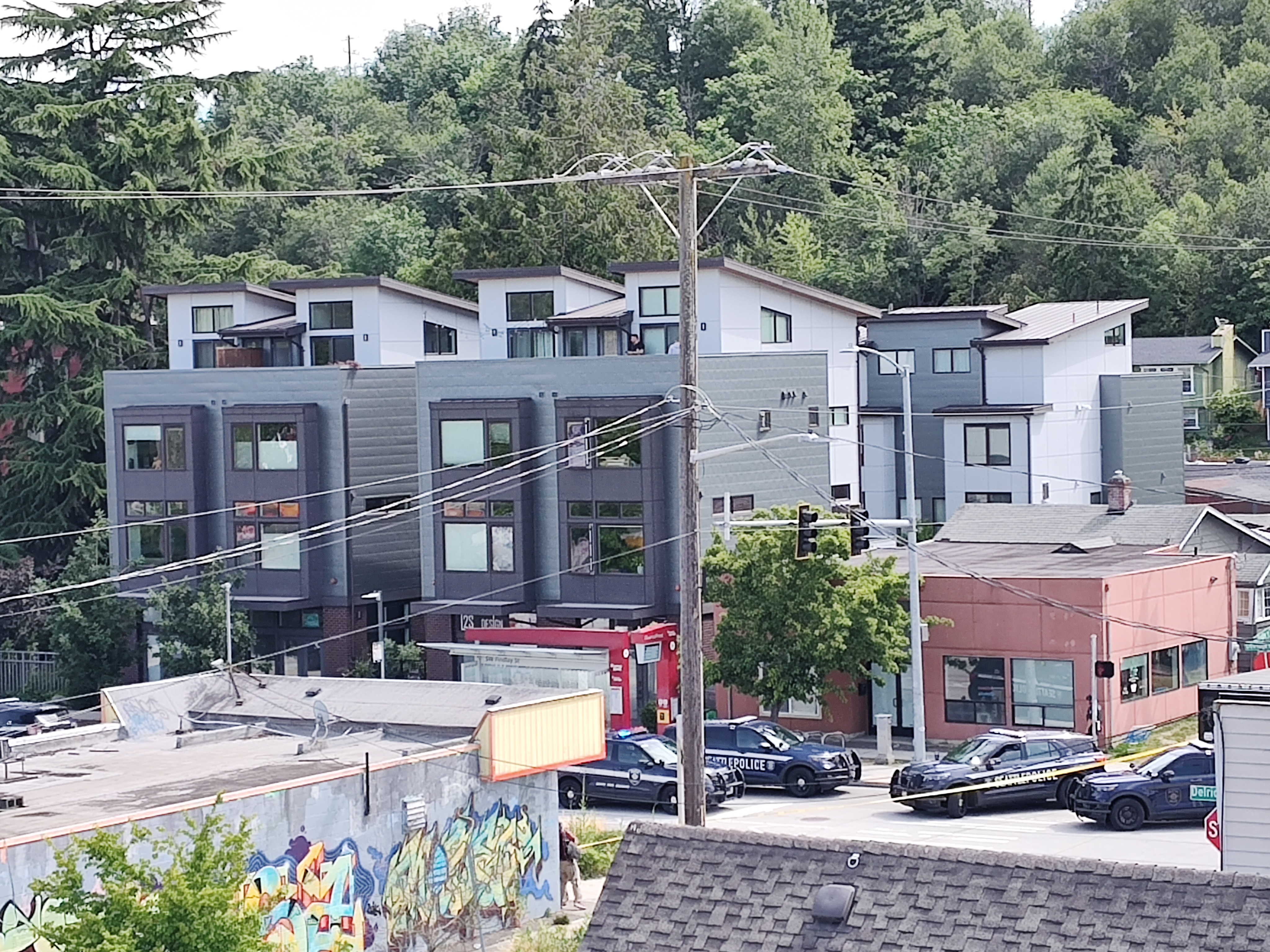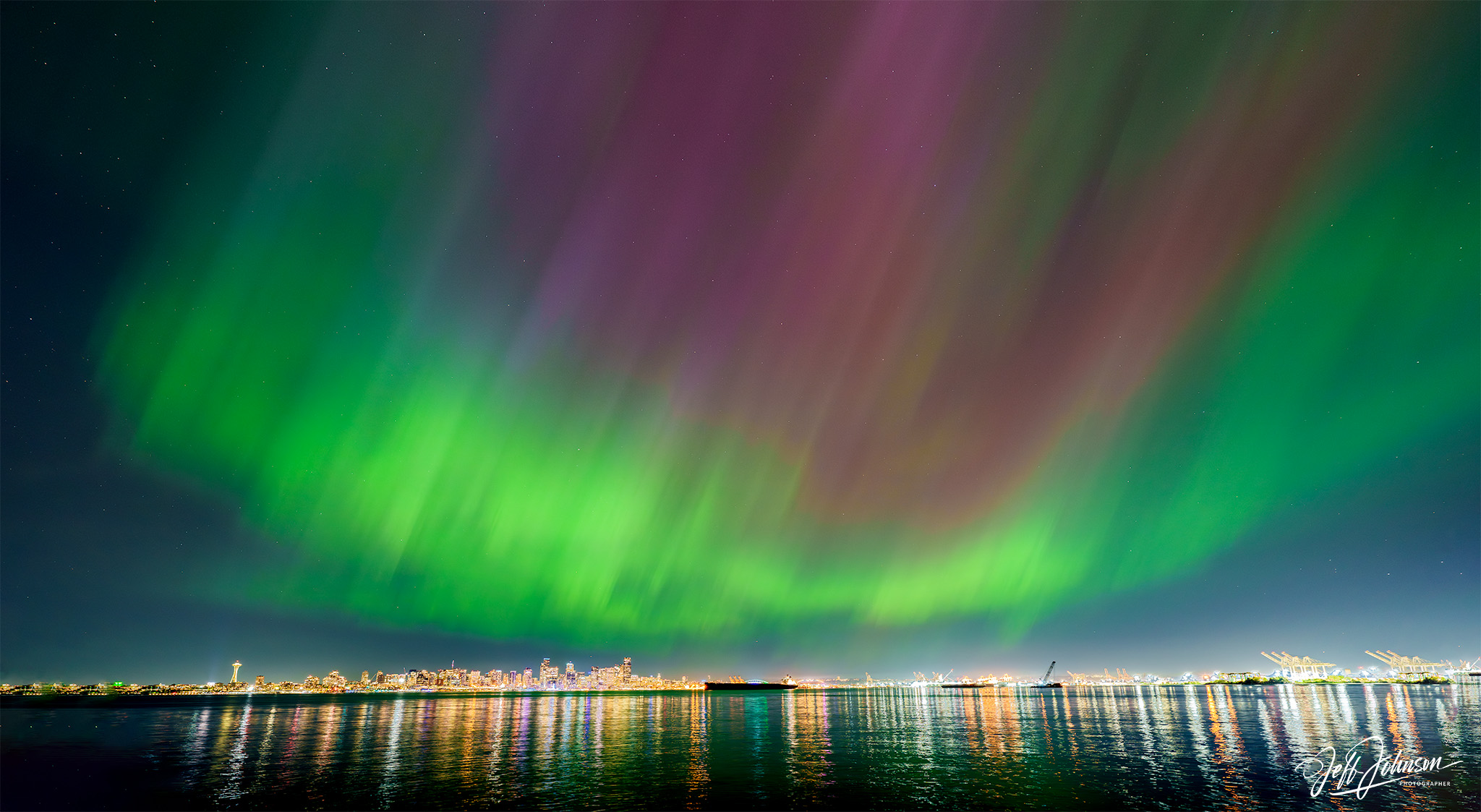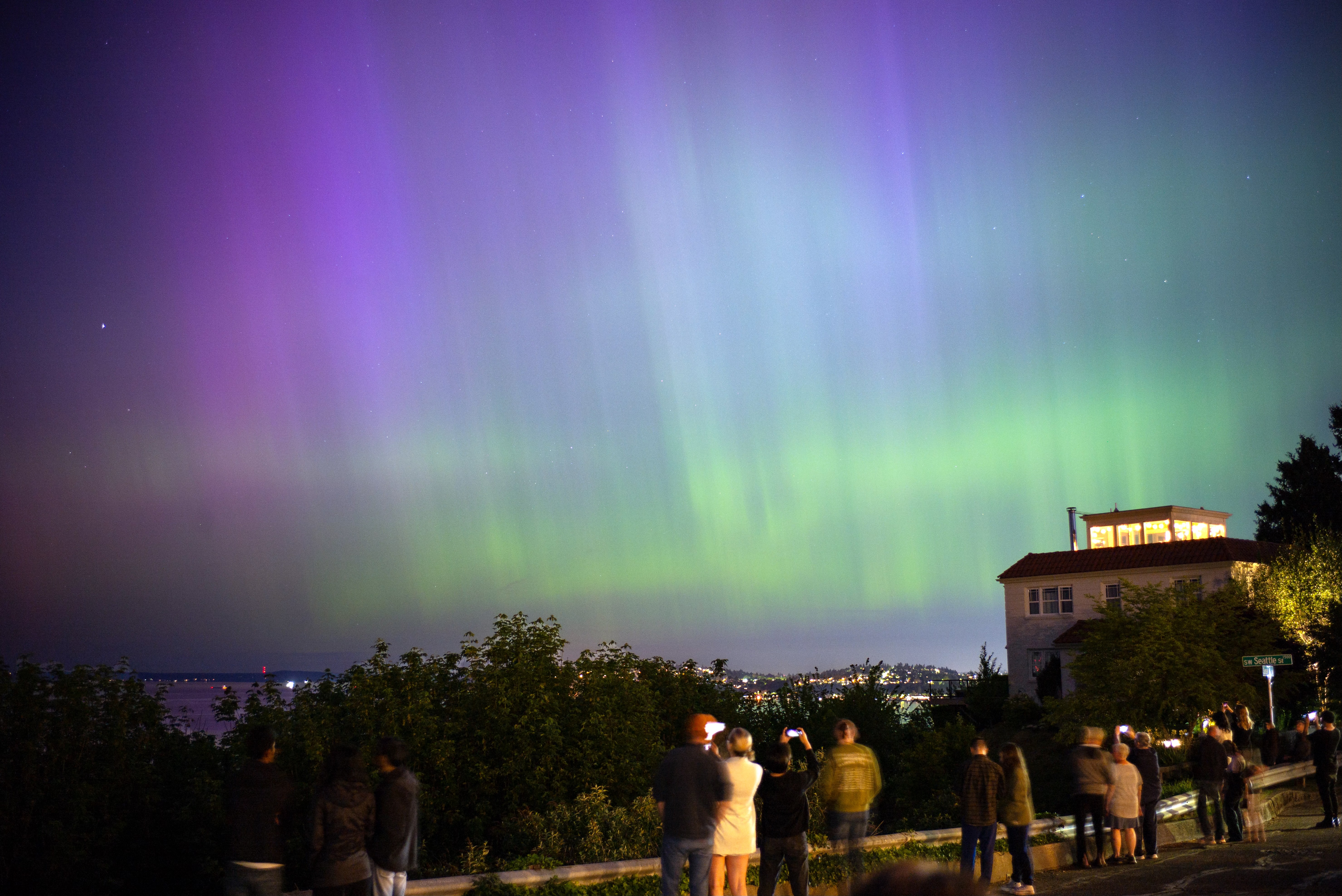Kersti Muul sent that hummingbird photo with the note, “Little Anna’s on the last stages of building her nest. A welcome reminder for people to check before the zealous spring pruning!” Since the weekend sunshine may have many outside pruning, as well as cleaning up what the February snows brought down, we asked her if there was more to say and show about what and who to watch for. She shared this, photos included:
Anna’s hummingbirds start nesting as early as December and can go through June. They love yards that have bright flowers (this one is in a camellia bush). They also nest where there are feeders because of the reliable, safe and close food source.
Look for tiny nests (see photo of my finger with an old nest for scale) usually on slightly downward facing [often forked] branches over an open space that have cover, but are also accessible to the fast-flying beauties. The nests are very delicate; they are constructed of spider webs, lichen, moss, feathers, and fluffy soft material (this one has dog-toy stuffing). This particular bird has been building this nest since around February 18, and is still perfecting it; now she is deepening the bowl by building up the rim.
The snow storm was catastrophic to many plants and I know people are anxious to get pruning.
Just take a peek around the borders of plants and maybe one to two feet back. They are really well camouflaged, especially before the last stages when there is usually some visible white fluff inside it. Anna’s are extremely territorial and if you are near a nest, they usually will have something to say to you, or may dive at your head. If you see hummers in the area, pay attention to where they travel, perch, feed etc. They just may lead you right to the nest.
Another clue is fuzzy nesting material stuck to their often-sticky beaks, as well as cleaning the beak back and forth on twigs. I watched this one take lichen off a nearby tree trunk to add to her nest.
Remember; it is illegal to tamper with an active nest. If you knock a nest down, try to put it back as close as possible to where it was.
But, Kersti – a community naturalist and conservation specialist – stresses that “if the tree is presenting a hazard, then of course safety should come first.”










| 18 COMMENTS